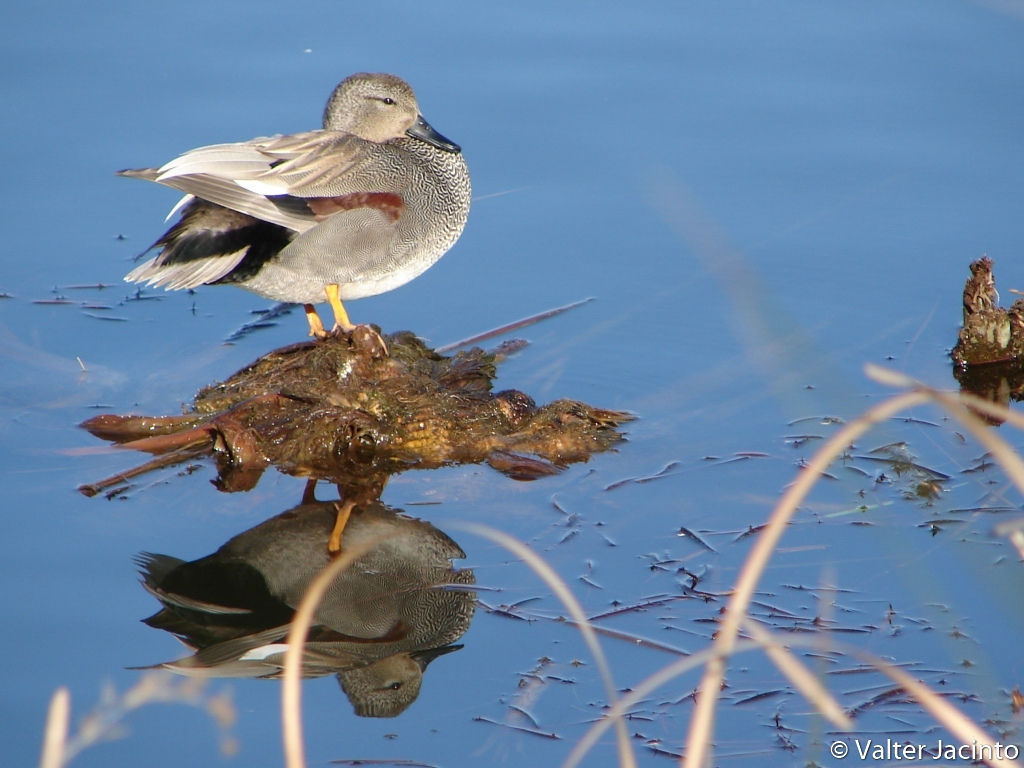| Taxon ID: 3,661 Total records: 39,143 | ||||||||||||||
Anas strepera
Country
| Country | Myanmar |
|---|---|
| Continent Ocean | Asia |
Classification
| Kingdom | Animalia (COL) |
|---|---|
| Phylum | Chordata (COL) |
| Class | Aves (COL) |
| Order | Anseriformes (COL) |
| Family | Anatidae (COL) |
Taxonomy
| Genus | Anas | Reference | |
|---|---|---|---|
| SubGenus | Vernacular Name | ||
| Species | strepera | IUCN Threat Status-Year | Least Concern, 2015 |
| SubSpecies | Nat'l Threat Status-Year | Not Evaluated, 2000 | |
| Infraspecies | Reason for Change | ||
| Infraspecies Rank | CITES | ||
| Taxonomic Group | Birds | Native Status | Native |
| Scientific Name Author | Linnaeus, 1758 | Country Distribution | Myanmar |
| Citation | Description | Geographic Range [top]
Countries occurrence:
Native:
Afghanistan; Albania; Algeria; Armenia (Armenia); Austria; Azerbaijan; Bahrain; Bangladesh; Belarus; Belgium; Benin; Bhutan; Bosnia and Herzegovina; Brunei Darussalam; Bulgaria; Burkina Faso; Burundi; Cambodia; Cameroon; Central African Republic; Chad; China; Congo, The Democratic Republic of the; Côte dIvoire; Croatia; Cyprus; Czech Republic; Denmark; Djibouti; Egypt; Eritrea; Estonia; Ethiopia; Finland; France; Gabon; Gambia; Georgia; Germany; Ghana; Greece; Guam; Guinea; Guinea-Bissau; Hong Kong; Hungary; India; Indonesia; Iran, Islamic Republic of; Iraq; Ireland; Israel; Italy; Japan; Jordan; Kazakhstan; Kenya; Korea, Democratic Peoples Republic of; Korea, Republic of; Kuwait; Kyrgyzstan; Lao Peoples Democratic Republic; Latvia; Lebanon; Liberia; Libya; Liechtenstein; Lithuania; Luxembourg; Macedonia, the former Yugoslav Republic of; Malawi; Malaysia; Maldives; Mali; Malta; Mauritania; Moldova; Mongolia; Montenegro; Morocco; Myanmar; Nepal; Netherlands; Niger; Nigeria; Northern Mariana Islands; Norway; Oman; Pakistan; Palau; Palestinian Territory, Occupied; Papua New Guinea; Philippines; Poland; Portugal; Qatar; Romania; Russian Federation; Rwanda; Saudi Arabia; Senegal; Serbia (Serbia); Seychelles; Sierra Leone; Singapore; Slovakia; Slovenia; Somalia; South Africa; South Sudan; Spain (Canary Is.); Sri Lanka; Sudan; Sweden; Switzerland; Syrian Arab Republic; Taiwan, Province of China; Tajikistan; Tanzania, United Republic of; Thailand; Togo; Tunisia; Turkey; Turkmenistan; Uganda; Ukraine; United Arab Emirates; United Kingdom; Uzbekistan; Viet Nam; Western Sahara; Yemen; Zambia; Zimbabwe
Vagrant:
Australia; Barbados; Bermuda; Botswana; Canada; Cape Verde; Christmas Island; Faroe Islands; Iceland; Marshall Islands; Mauritius; Mexico; Puerto Rico; Réunion; Svalbard and Jan Mayen; Timor-Leste; United States (Georgia - Native); United States Minor Outlying Islands
Continuing decline in area of occupancy (AOO): Unknown
Extreme fluctuations in area of occupancy (AOO): No
Estimated extent of occurrence (EOO) - km2: 16900000
Continuing decline in extent of occurrence (EOO): Unknown
Extreme fluctuations in extent of occurrence (EOO): No
Continuing decline in number of locations: Unknown
Extreme fluctuations in the number of locations: No
Range Map: Click here to open the map viewer and explore range.
Population [top]
Population: The global population is estimated to number c.2,600,000-2,800,000 individuals (Wetlands International 2006), while national population estimates include: c.50-1,000 individuals on migration and c.50-1,000 wintering individuals in China, c.50-1,000 individuals on migration and |
|
| Source |
Record Level
Growth Parameters
| Temperature | 0 | Observed Weight | 0 |
|---|---|---|---|
| Sex | Previous Catalog Number | ||
| Life Stage | Relationship Type | ||
| Preparation Type | Related Catalog Item | ||
| Individual Count | 0 | GML Features | |
| Observerd Individual Count | 0 | Notes |
Collecting Event
Images
|
Additional Info
Synonyms To Manage Synonyms for Anas strepera, click this link: Synonyms. |
Mareca strepera (Linnaeus, 1758) |
Common Names To Manage Common Names for Anas strepera, click this link: Common Names. |
Gadwall () |
Localities To Manage Localities for Anas strepera, click this link: Localities. |
Species Record Updated By:
Carlos Aurelio Callangan
|

